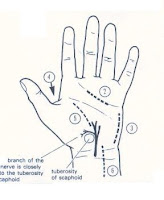
The anaerobic infections are of importance for they are the
dreaded complication that occur in surgical practice whenever the
system of asepsis and sterilisation of a hospital breaks down.
* These infections can also occur as a result of TRAUMA in
domestic, traffic, industrial accidents and DISASTERS
(earthquakes, train and air accidents etc.)
* WAR injuries also lead to an increased incidence of
anaerobic infections.
* They can occur in clean contaminated surgical wounds when
the GI tract is ENTERED in a surgical procedure.
2.1 Tetanus
Tetanus is caused by Clostrodium Tetani
- A gram positive bacillus, which forms spores and appears as a drumstick under the microscope.
- It is highly resistant to physical agents, and cannot be
destroyed by drying or heat.
- Soil in the street is contaminated with animal excreta
containing this organism.
- In hospitals, infection may be traced to inadequately treated
catgut, or inadequately sterilized instruments, linen and
supplies.
Any questions be sent to drmmkapur@gmail.com
Allearlier posts are stored in archives for your access and review.
Visitors that follow the site may post contributions to the site.
For provider/consumer convergence visit http://bit.ly/cPTh6f
http://www.otmanage.blogspot.com/






